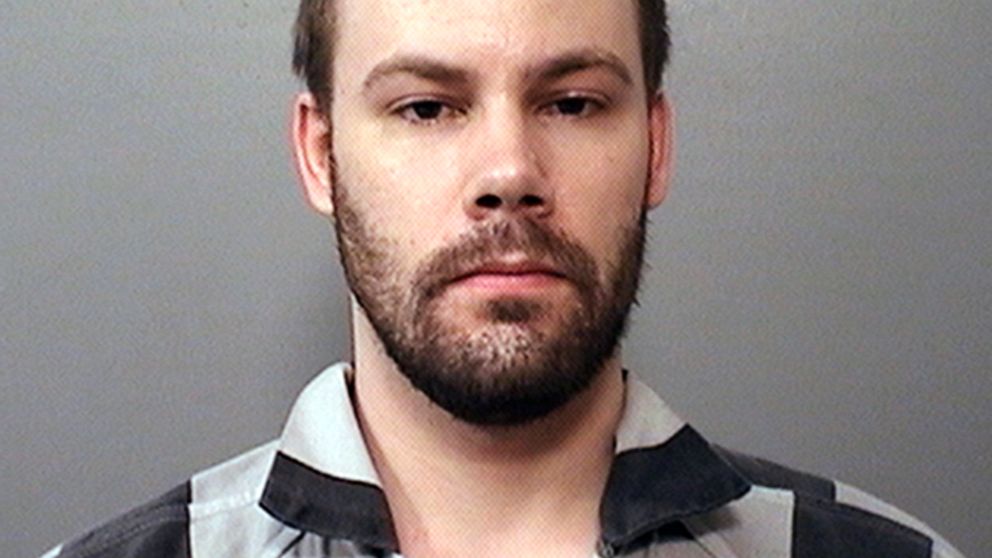
Lawyers for a former University of Illinois doctoral student accused of kidnapping, torturing and killing a visiting scholar from China spent nearly two years preparing for the day they would address jurors for the first time at trial.
After all that, it took less than a minute for one of the defense attorneys to walk to a podium this week and acknowledge to the jury that their client, Brendt Christensen, did in fact carry out the slaying of 26-year-old Yingying Zhang.
The admission during opening statements of the federal death-penalty trial Wednesday seemed to startle some jurors who minutes earlier had listened to a prosecutor allege that Christensen abducted Zhang off campus and raped, stabbed, choked and beat her with a baseball bat before decapitating her at his Urbana, Illinois, apartment.
Admitting that a defendant is guilty from the outset of a trial is a rare strategy. Here’s a closer look at the approach and what Christensen’s defense team might be trying to accomplish:
Q: HAS CHRISTENSEN EVER DENIED KILLING ZHANG?
A: Technically, he has. He entered a not-guilty plea to a federal charge of kidnapping resulting in death after his arrest in June of 2017. However, he and his lawyers have not made what’s often a standard after-arrest declaration in homicide cases: The claim that investigators have the wrong man and that he’d be exonerated at trial.
Among the possible reasons he didn’t declare his innocence is that Christensen, now 29, wanted it known that he had chosen a victim at random and killed her. According to prosecutors, Christensen told his girlfriend weeks earlier he aspired to become infamous by killing someone. Denying he killed Zhang would have defeated that goal.
The evidence also seems overwhelming. It includes secret FBI recordings of Christensen that, if prosecutors have characterized them correctly, amount to confessions.
Q: WHAT’S THE DEFENSE THINKING?
A: Christensen’s trial has two phases: The first, the one they’re in now, is the verdict phase where jurors are hearing evidence about whether he committed the crime. If they convict him, the death penalty phase would follow.
In the penalty phase, prosecutors would present reasons why Christensen deserves to die. They likely would highlight how they believe Zhang was tortured. The defense would then present reasons why his life should be spared, perhaps calling witnesses to talk about his childhood or struggles with mental illness. All 12 jurors would have to agree Christensen deserves to die. If just one juror holds out against execution, Christensen would face life in prison instead.
When defense lawyer George Tesseff told jurors Wednesday he would begin his remarks with what he realized was an unusual admission — that “Brendt Christensen killed Yingying Zhang” — he said he was making that admission right away because his client “is on trial for his life.” That suggests Christensen’s legal team is, in effect, jumping straight into the death penalty phase and will focus its evidence, cross-examinations and arguments on convincing the jury to spare Christensen’s life.
Q: WHY DIDN’T CHRISTENSEN JUST PLEAD GUILTY?
A: Had Christensen entered a guilty plea, a 12-person jury would still have been convened to decide whether he should or shouldn’t be executed. Higher courts have determined that only juries, not judges, should determine if aggravating factors justify the death penalty.
By pleading not guilty, the defense forced the two-phase process — the verdict and death penalty phases. That bought them more time to make the case that Christensen’s life should be spared, said Robert Dunham, an executive director of the nonpartisan Death Penalty Information Center in Washington.
He speculates that Christensen’s lawyers may believe that telling jurors in the verdict phase that Christensen did kill Zhang gives jurors a chance to process the shock of that admission. They may think that at least some jurors won’t be as horrified or incensed weeks from now when they have to vote on whether Christensen should live or die.
Q: ARE THERE OTHER POTENTIAL ADVANTAGES TO THE STRATEGY?
A: The defense is also likely to use the time accorded them in the verdict stage to seek to show that — in some critical details — prosecutors aren’t accurately portraying what happened. In openings, for instance, the defense took issue with the prosecution tossing out the notion Christensen may have killed 12 others before killing Zhang. Tesseff balked at this in his opening. He said there’s no evidence of other victims.
“To the extent that the defense can show the prosecution is exaggerating claims to make the crime look worse than it was — that diminishes the power of the aggravating factors prosecutors seek to present in the death penalty phase,” Dunham said.
He said the defense potentially could argue later in the death penalty phase that the admission in the verdict phase demonstrated Christensen was accepting responsibility. Acceptance of responsibility is a potential mitigating factor that jurors can consider when they vote on imposing the death penalty.





